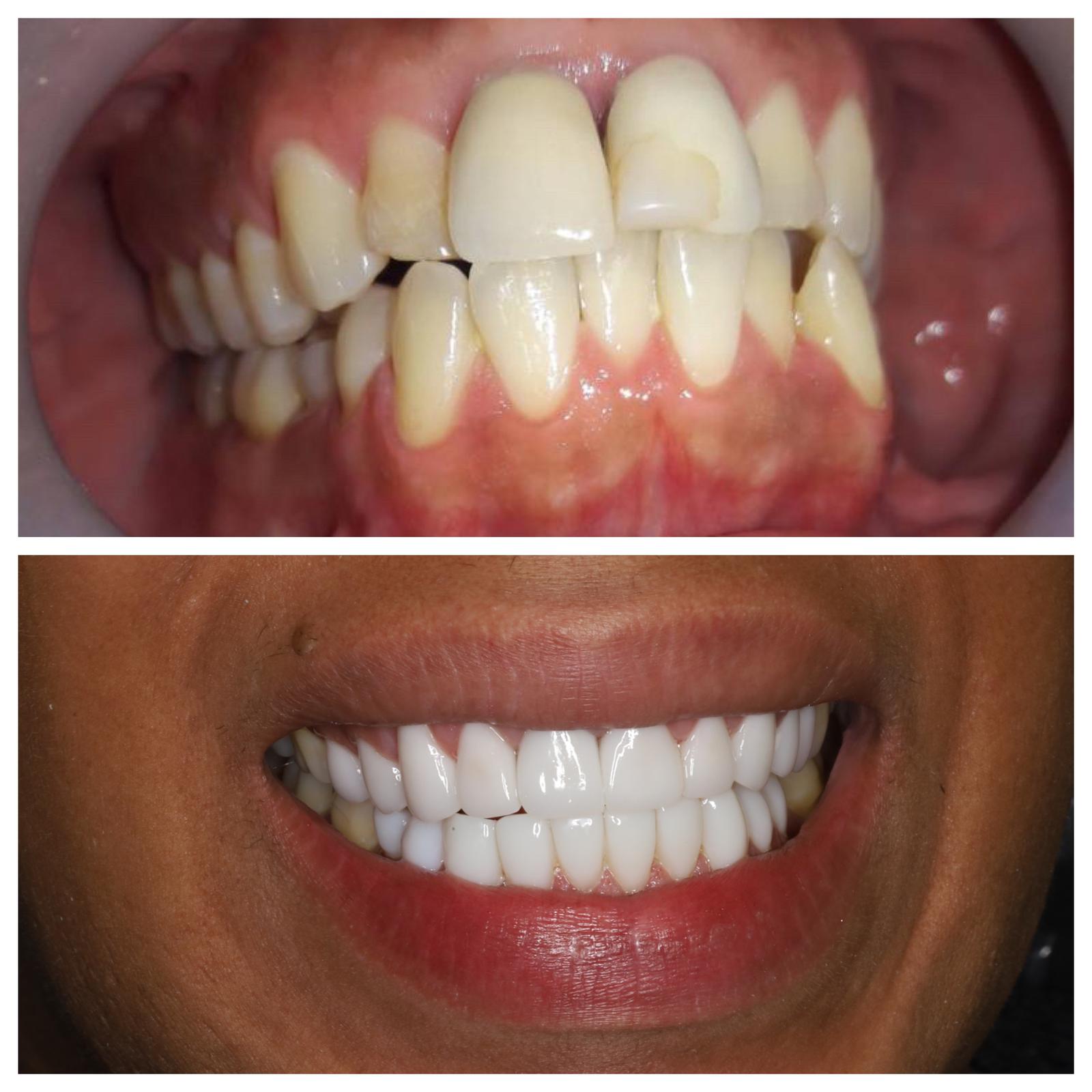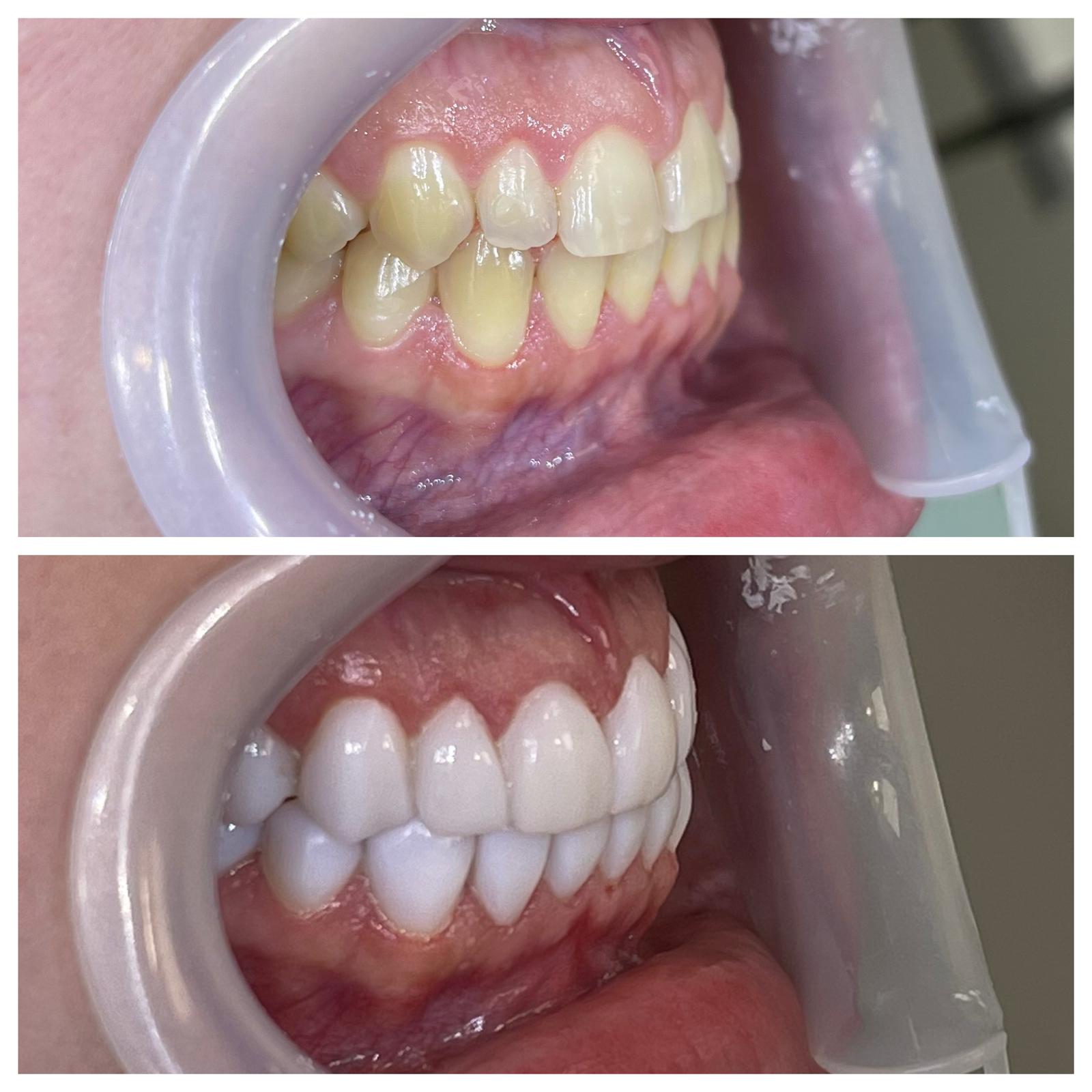SMILE DESIGN VENEERS

What are Veneers?
If you’re looking for a way to achieve a beautiful smile design quickly, veneers might be the perfect solution. This treatment is ideal for people with teeth that are stained, chipped or have gaps. However, it’s important to keep in mind that veneers are largely a permanent treatment. Before you and your dentist decide if the procedure is right for you, be sure to have all the facts about veneers, including their cost and how to properly care for them.
A veneer is like a thin, personalized shell for your teeth that is designed to enhance your appearance. Dental veneers can be made from porcelain or from resin composite materials, and each offers its own unique benefits. With porcelain veneers, you get the strength and resilience of natural tooth enamel. And with resin composite veneers, you get a custom-made look that is truly your own. So no matter which type of veneer you choose, you can be sure that you’re getting the best possible solution for your smile.
Why are Veneers used in dentistry?
Veneers are a more creative solution than crowns or braces because they can be used in a variety of ways. Veneers can be used to close gaps, correct small misalignment, or even enhance the brightness of your teeth. They are also a great way to straighten your smile if you have issues like discoloration, fractures, or chips.
What is the Process for Placing Veneers?
The number of visits to the dentist for dental veneers usually ranges from one to three. The process usually starts with a consultation appointment, followed by two appointments for making and applying the veneers. It is possible to veneer one tooth or multiple teeth at the same time.
Diagnosis and Treatment Planning
Preparation
Before getting veneers, your dentist will remove a thin layer of enamel from your tooth. They’ll then decide if you need a local anesthetic to numb the area. Next, your dentist will make a model or impression of your tooth. This model is sent to a dental laboratory, which in turn constructs your veneer. It usually takes 2-4 weeks for your dentist to receive the veneers back from the laboratory. This is only done for porcelain veneers, as composite can potentially be done in one visit. For very unsightly teeth, temporary dental veneers can be placed.
Bonding
To prepare your tooth to receive the veneer, your tooth will be cleaned, polished, and etched. This roughens the tooth to allow for a strong bonding process. A special cement is applied to the veneer and the veneer is then placed on your tooth.
Once properly positioned on the tooth, your dentist will apply a special light beam to the dental veneer. This activates chemicals in the cement, causing it to harden very quickly.
The final steps involve removing any excess cement, evaluating your bite and making any final adjustments in the veneer as necessary. Your dentist may ask you to return for a follow-up visit in a couple of weeks to check how your gums are responding to the presence of your veneer and to once again examine the veneer’s placement.

What is the Difference Between Porcelain and Composite Veneers?
Material Matters: Deciding Between Porcelain and Composite Veneers
When it comes to veneers, you have two main options: porcelain and composite. Here’s a quick rundown of the pros and cons of each to help you decide which is right for you.
Porcelain veneers are the gold standard and can last up to 20 years with proper care. They’re also more resistant to staining and chipping than composite veneers. On the downside, they’re more expensive (starting at $800 per tooth) and require more preparation of your natural teeth.
Composite veneers are a popular alternative that can be done in one visit and don’t require as much preparation of your natural teeth. However, they’re not as durable as porcelain veneers and typically only last 5-7 years. They’re also more likely to stain and chip than porcelain veneers.
Care for Veneers
Proper oral hygiene is vital to keeping your veneers in good condition. Be sure to brush and floss regularly, and use non-abrasive fluoride toothpaste. You should also limit coffee and other foods that can cause staining. Keep in mind that veneers will need to be replaced at some point, but proper care can help them last as long as possible. If you’re considering veneers, consult with your dentist to be sure you understand the entire process and cost. A beautiful smile can increase both your confidence and well-being.
Do you have any questions about veneers? Call Dr. Perez Feliz to schedule an appointment with your dentist 347.663.0363.
347.663.0363
Contact Us
We love to hear from you. If you have any questions please feel free to contact us. A representative will contact you with in 24-48 hours.
Address
3190 Riverdale Ave
Bronx, NY 10463
Phone
347.663.0363
646.6220.1995
HOURS OF OPERATION
Monday – Friday
10:00am – 6:00pm





